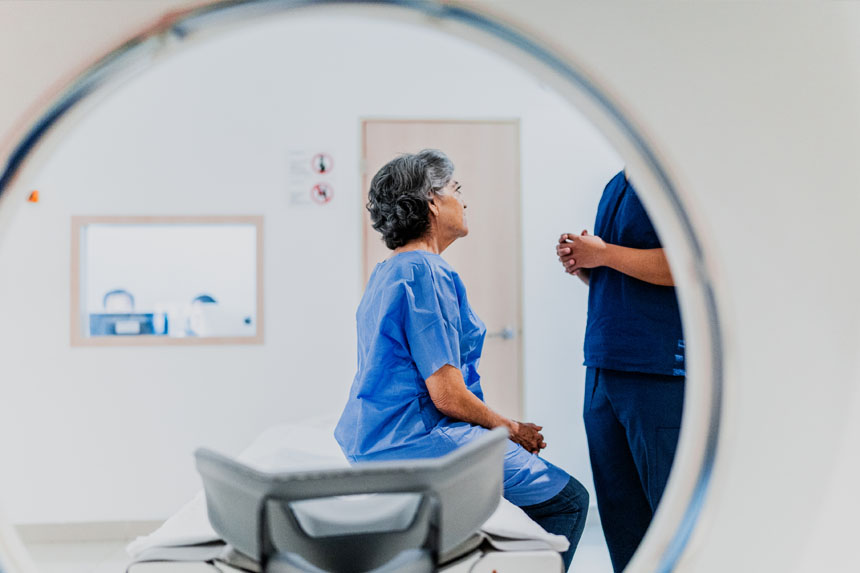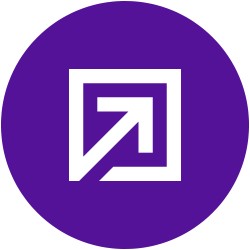The increasing prevalence of neurological conditions, driven by an aging population, is opening up significant opportunities for medical device companies. As conditions like stroke, Alzheimer’s, and migraines become more common, companies that can innovate to meet the evolving needs of healthcare providers and patients will be primed for growth.
In this blog, we’ll dive into key trends in neurology—ranging from cutting-edge technologies like brain-computer interfaces to advancements in medical imaging—and explore their implications for the medtech industry.
Trend #1: The introduction of brain-computer interface (BCI) technology
The FDA’s approval of the first brain-computer interface (BCI) for rehabilitation in 2021 marked a milestone in neurological treatment, particularly for stroke rehabilitation. However, BCIs are poised to move beyond just aiding stroke recovery. These interfaces, which allow patients to control devices through thought alone, hold great promise for patients with a range of neurological conditions, from epilepsy to paralysis. With several other BCIs progressing through development, more are expected to receive FDA approval in 2025.
As BCIs evolve, expect greater demand for complementary hardware—ranging from neural sensors to next-generation prosthetics. For medtech companies, the opportunity extends beyond standalone devices to creating integrated ecosystems that combine BCIs with other assistive technologies. Companies that can innovate around the interoperability of these systems will lead the market. As the technology progresses, medtech firms will also need to focus on safety, long-term device stability, and integration with existing therapeutic protocols to meet the needs of both providers and patients.
Trend #2: Using nanotechnology to repair brain tissue
It’s a technology that has been in the research phase for years, and advancements are finally on the horizon.
Nanotechnology uses nanoparticles to deliver drugs or other therapies to specific areas of the brain, allowing for highly targeted treatment. This precision means more effective treatment and fewer side effects. Additionally, because the drugs are delivered directly to the target tissue, there is less concern about harmful effects on healthy areas, allowing the use of more aggressive treatments.
While nanotechnology offers the promise of highly targeted treatments, one of the biggest challenges in brain therapy remains the blood-brain barrier (BBB). To overcome this, new treatment approaches are needed—this is where nanoparticles come in. Their small size allows them to bypass the BBB, allowing drugs to reach the brain more effectively.
Applications of nanotechnology have shown great promise in treating brain-related conditions. For example, nano-based gene therapies are being used to treat certain cancers without damaging surrounding brain tissue. Enzyme replacement therapy, as well, has seen nano-sized applications, and its use in neurology is expected to grow as research continues to uncover its potential.
As these advancements in nanotechnology continue to unfold, medical device companies have a unique opportunity to shape the future of brain disease treatments by developing delivery systems and complementary devices that enhance the precision and effectiveness of these emerging therapies.
Trend #3: Advancing PET radiotracers
PET radiotracers are emerging as a significant opportunity for medtech companies specializing in diagnostic imaging and radiology. This year, we’ve seen notable advancements in novel PET radiotracers, which, while still in the trial stages, highlight the growing potential of this technology for the future of medical diagnostics.
One such radiotracer currently undergoing trials has shown the ability to measure increases in brain tau protein in autosomal dominant Alzheimer’s disease before symptoms appear. This could be a game-changer for early detection and monitoring, offering a significant leap forward in diagnosing Alzheimer’s in its earliest stages. Should this technology be validated, it could drive increased demand for disease-modifying therapeutics designed to halt the progression of neurodegenerative diseases and open up new markets for diagnostic equipment.
Beyond Alzheimer’s, PET radiotracers are also advancing in oncology, with some devices showing promise in detecting metastatic cancer lesions in patients with neuroendocrine tumors. This capability could reshape diagnostic approaches in cancer care, offering medtech companies the opportunity to scale their diagnostic imaging solutions to more healthcare providers and larger groups of patients.
Trend #4: Evolving MRI technology
MRI technology is evolving along two distinct pathways: the development of larger, more advanced machines with enhanced capabilities, and the creation of smaller, more portable models. Both trends present significant opportunities for medtech companies.
On one hand, the advancement of high-field MRI machines provides an opportunity for medtech companies to compete on the basis of superior diagnostic accuracy. These machines, with their higher resolution and ability to detect intricate details, allow more precise detection of complex conditions. This creates an avenue for companies to differentiate themselves in a highly competitive market by offering products that improve clinical outcomes, support more targeted treatments, and potentially reduce diagnostic errors.
On the other hand, the rise of portable MRI systems offers a distinct, yet equally valuable, opportunity. Portable models, which are typically more affordable and compact, are poised to expand access to advanced diagnostic imaging, particularly in resource-limited or remote settings. Medtech companies can tap into new markets by developing and commercializing portable systems that increase healthcare accessibility, reduce wait times, and provide more flexible imaging options in emergency and point-of-care environments.
Both pathways present opportunities to enhance the value proposition of medtech companies, but success will depend on balancing technological innovation with practical considerations like cost, accessibility, and integration with existing healthcare infrastructures.
What are the neurology and neuromuscular codes with the most hospital procedures in 2022?
As these technologies continue to shape the future of neurology, it’s important to understand how they align with real-world applications. Claims data can offer valuable insights into the actual impact of medical technologies on patient care, revealing trends in neurology procedures and helping to identify evolving patient needs.
For instance, polysomnography is one of the most commonly performed procedures in neurology, according to claims data. This test measures critical data such as brain waves, blood oxygen levels, breathing patterns, and heart rate, all of which are essential for identifying neurological causes of sleep disorders. The process relies on advanced technologies like EEG, pulse oximeters, respiratory sensors, and ECG to provide a comprehensive picture of a patient’s sleep health.
For medical device companies, understanding the most common procedures in neurology provides key insights into market demand, allowing you to align innovations with high-demand procedures and capitalize on emerging opportunities. Understanding where these procedures are taking place is an essential part of your sales and marketing targeting. Dive deeper into the top hospitals performing neurology procedures or the largest neurology physician groups in the U.S.
Learn more
Neurology is evolving rapidly, with innovative devices offering new ways to diagnose, treat, and prevent brain disorders. By staying attuned to the latest trends, medtech companies can better anticipate shifting market needs and position themselves for success in this dynamic field.
Dive deeper into our Healthcare Insights for strategic guidance in your planning or start a free trial to access the data behind these healthcare trends.


